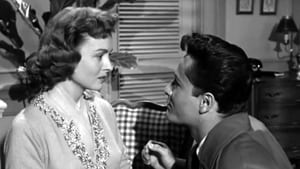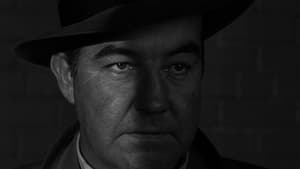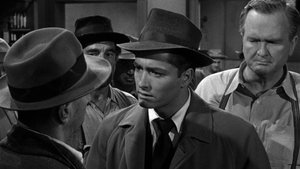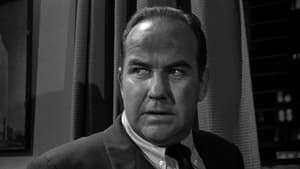Contact: [email protected]
Video Sources 0 Views
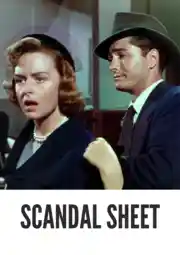
Synopsis
[ez-toc]





Introduction
In the vast expanse of cinematic history, certain films emerge as timeless classics, etching themselves into the collective memory of audiences. “Scandal Sheet Colorized 1952” is one such masterpiece, a film that not only stood the test of time in its original form but has now been resurrected in vibrant hues, breathing new life into its gripping narrative. Released in 1952, the film is a quintessential example of the film noir genre, renowned for its atmospheric storytelling and moral ambiguity.
Read Media File Transfer Agreement: Terms and Conditions
Read FAQ
The Making of “Scandal Sheet Colorized”
At the helm of this cinematic gem is director Phil Karlson, a maestro of film noir known for his distinctive approach to storytelling. His films often delve into the darker aspects of human nature, and “Scandal Sheet Colorized” is no exception. Karlson’s signature style, marked by intense atmospheres and morally complex characters, finds a perfect canvas in this tale of intrigue and corruption.
The roots of “Scandal Sheet Colorized” can be traced back to Samuel Fuller’s novel, “The Dark Page.” Fuller, a former journalist himself, brought an authenticity to the narrative that resonates with viewers. Karlson’s adaptation skillfully translates Fuller’s exploration of the cutthroat world of journalism to the silver screen, creating a film that not only entertains but also offers a thought-provoking commentary on the ethics of the newsroom.
Exploring “Scandal Sheet Colorized”: Plot and Themes
“Scandal Sheet Colorized” unfolds as a gripping murder mystery set against the backdrop of a newspaper’s newsroom. The relentless pursuit of sensational headlines becomes the canvas upon which a dark secret is unveiled. The film, true to the noir genre, weaves a narrative filled with suspense, shadowy cinematography, and morally ambiguous characters.
One of the film’s central themes revolves around yellow journalism, shedding light on the unscrupulous practices employed to secure a headline. As the plot thickens, the audience is taken on a journey that explores the intricate web of truth and deception in a corrupt society. The incorporation of a love interest subplot adds a layer of complexity, elevating “Scandal Sheet Colorized” beyond a mere murder mystery.
Revitalizing a Classic: The Colorization of “Scandal Sheet Colorized”
The decision to colorize an old film is often met with skepticism, with purists arguing that it might compromise the original vision. However, “Scandal Sheet Colorized 1952” challenges these preconceptions by offering a fresh perspective on a classic. The motivation behind the colorization goes beyond mere aesthetic enhancement; it’s a deliberate effort to introduce a new generation to the brilliance of the film while preserving its historical significance.
The process of digital restoration and colorization is a delicate one, requiring meticulous attention to detail. In the case of “Scandal Sheet,” the goal was to strike a balance between authenticity and visual enhancement. The colorization technique applied to the film succeeds in breathing vibrancy into the characters and settings without overshadowing the noir aesthetic. It’s a testament to the careful consideration involved in revitalizing a classic for a modern audience.
The Impact and Controversy of Colorizing Old Movies
Colorization of old movies has been a topic of ongoing debate within the film community. The question remains: does it enhance or compromise the original vision? “Scandal Sheet Colorized 1952” enters this conversation as a case study, showcasing that colorization can indeed enhance the viewing experience without diluting the essence of the film.
Preserving film history is a paramount concern when updating visuals. “Scandal Sheet” manages to strike a delicate balance, respecting the noir legacy while introducing a contemporary aesthetic. The controversy surrounding colorization fades when the result is a harmonious blend of cinematic tradition and modern sensibilities.
Reception and Legacy
Upon its original release in 1952, “Scandal Sheet” received acclaim for its taut narrative and atmospheric cinematography. Critics praised its unflinching portrayal of the dark underbelly of journalism. While not an immediate box office sensation, the film found its audience over time, solidifying its place in the noir genre.
Today, “Scandal Sheet Colorized 1952” stands as a testament to the enduring power of classic cinema. The colorized version has reignited interest in the film, drawing both seasoned noir enthusiasts and a new wave of viewers. Its legacy extends beyond the noir genre, influencing subsequent generations of filmmakers who continue to be inspired by its storytelling prowess.
Why You Should Watch “Scandal Sheet” Colorized 1952
For both avid film noir enthusiasts and those new to the genre, “Scandal Sheet Colorized 1952” offers a captivating cinematic experience. The colorization breathes new life into the film, allowing audiences to appreciate the nuances of the narrative in a visually stunning manner. The timeless qualities of the story, coupled with the enhanced visuals, make it a must-watch for anyone seeking to delve into the golden age of cinema.
Where to Watch “Scandal Sheet” Colorized 1952
To embark on the journey of “Scandal Sheet Colorized 1952,” classic film enthusiasts can find this cinematic gem on various streaming platforms. From established classics repositories to platforms dedicated to preserving film history, the movie is readily accessible for those eager to witness the marriage of noir brilliance and modern visual allure.
In conclusion, “Scandal Sheet Colorized 1952” stands as a testament to the timelessness of classic cinema. Its resurrection in color not only introduces a new generation to the magic of film noir but also sparks a conversation about the delicate art of colorizing old movies. As the vibrant hues breathe new life into this cinematic masterpiece, audiences old and new find themselves captivated by a tale that transcends the boundaries of time.
